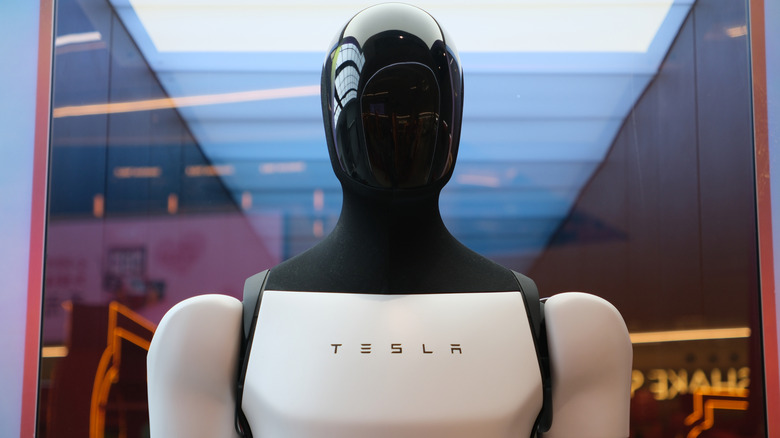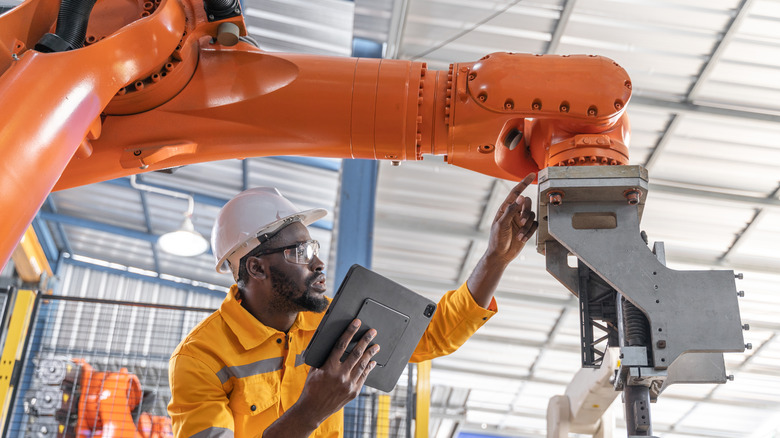Robots in car factories are definitely a thing. And they have been for decades. But so are human workers. For some reason, maybe due to the upsurge in artificial intelligence hype or Elon Musk’s ambitious predictions for Tesla’s Optimus droids, there’s suddenly abundant chatter about how manufacturing is going to be massively automated in the not-too-distant future.
Automotive News has the latest, quoting Andy Qiu, an AI expert at SBD Automotive, who argues that robots in factories will shift from helping human workers to displacing them. And who can blame him for such prognostications? Humanoid robots have already labored alongside their fleshy ancestors in a Mercedes plant. Politicians who are hot to bring back made-in-U.S.A. stuff and “reshore” U.S. manufacturing are also insisting that automated factories will put humans in highly paid supervisory roles, keeping a watchful eye on the robots.
But before we completely banish humans from the joys of the moving assembly line, let’s consider how well the robot takeover plan has worked out in the past.
Tesla’s failure at Fremont
Back in 2018, before the Tesla Model 3 was selling in big numbers, I visited Tesla’s California factory in Fremont to do a couple of stories. While there, I toured the assembly lines and noticed that one of them didn’t really seem to be active. “What’s that?” I asked. Top secret was basically the response I got.
It was the infamous automated Model 3 line that Tesla had to abandon when it didn’t work. What followed was one of the more outlandish and pragmatic innovations in the history of the car business: Tesla threw up a line under a tent in the factory parking lot. It got the job done, but it also seemed to traumatize Musk into concluding that the robots required for building cars were going to have to emulate human skills more than anyone thought.
Hence, Optimus. Based on what we’ve seen so far, however, I think these droids will be more useful on missions to Mars than they ever will be in car plants.
No substitute for the human worker
It’s important to note that while robots have taken some jobs out of the hands of humans over the past 50 years, this transition has actually led to more human jobs, not fewer. The Centre for Economic Policy Research found that the addition of a single robotic worker to a factory increased human employment by 1.3 jobs.
In auto factories, the robots that are there are incredibly effective at precise welding and manipulation of heavy components. They suck at swiftly crawling around half-assembled vehicles while the line moves along, screwing in fiddly little parts, wrangling wiring harnesses, and generally executing a lot of detailed work that requires dexterity and flexibility. Humanoid robots are comforting to humans but they are still learning to dance without falling over, tend bar, and fold clothes.
I can remember when naysayers insisted we’d never watch videos on the internet, so I fully expect humanoid robots to someday become so sophisticated that we’ll think they’re just like us. But I have also followed the predictions made about self-driving cars. Forgive me if I think the robots taking over the car factories could requires us to wait a bit longer than expected.
When they do dominate, we might not be building personal cars much anymore. The robots will build the cars and drive the cars. In a depressing post-automotive future for enthusiasts, one could imagine mostly autonomous EVs, constructed from large, modular components, to move down the assembly line, with no need for human – or robot – hands to get involved. Former GM executive Bob Lutz has done just that. But for the next few decades, humans will find plenty to do when it comes to bolting together cars.




